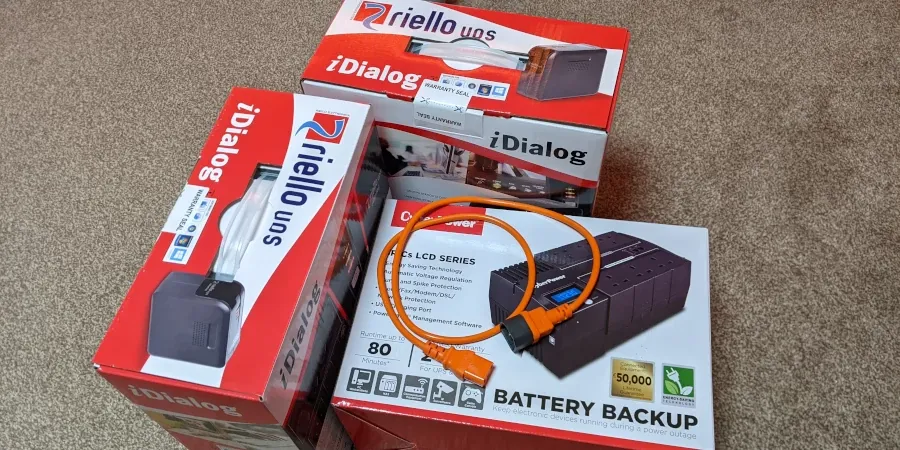Running your home network off of a UPS may seem like overkill, but if you're planning to get into home automation, it's an investment that I've found to be really useful.
I meant to write this blog post in December 2021 when I first set this up, but I just haven't gotten around to it for one reason or another. However, a recent power cut at home made me reconsider. So whilst I'm writing this retrospectively, it does have the added benefit that I can reflect on having relied on a UPS-powered home network for the last year and a half.
Is this really necessary?
Running your home network off of one or more UPS devices is probably unnecessary for most people. However, for a subset of people, it's likely to be a useful addition to your setup.
The catalyst for me adopting a UPS-backed home network was my journey into home automation. Upgrading light switches to smart light switches and various other home automation-related activities often require the power to be turned off for relatively short periods of time.
Each time this would happen, two friction points would often emerge:
- Anyone else in the house would lose internet access, and this would disrupt what they were doing
- Because most smart home tech is wireless, you'd have to wait a few minutes each time power was restored for the network to boot so that you could test the latest addition of smart home tech
These are both very much first-world problems that can arguably be worked around with a bit of patience. However, I wanted (rather than needed) a tech solution to the problem.
Picking a UPS
The layout of my home network means that I'll need a UPS in 3 different locations to power the entire network in a power outage.
Nearly a year before I started this project, I added a UPS to my home office. The desk in my home office has a fair amount of equipment, so I opted to go for something reasonably powerful and with a good reputation; therefore, I picked an Eaton 5SC 1000i.
I am very happen with the Eaton 5SC 1000i, but it isn't the cheapest option and I didn't want to be spending anything close to this for the home network for two main reasons:
- Networking equipment has a low power draw relative to a computer and a microserver, therefore I don't need something as powerful
- I need 3 new UPS devices, so cost is a consideration
So, I settled on the following:
- 2x Riello iDialog 600VA
- 1x CyberPower BricLCD 1kVA (BR1000ELCD) Line Interactive
Two of the locations that I'm powering just have a fairly simple network switch. One is a Ubiquiti UniFi Switch 8 Port (US-8-60W), and the other is a Ubiquiti 150W 8 Port UniFi PoE Switch (US-8-150W).
The 150W PoE Switch takes an IEC C13 plug (or, colloquially, a kettle lead), so with an IEC C13 to C14, this can be plugged directly into one of the Riello iDialog's.
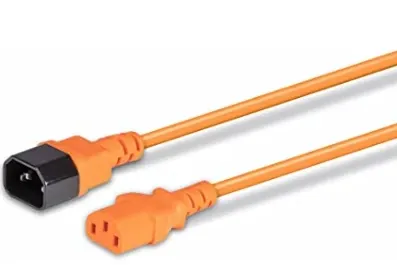
The smaller, 60W switch uses a transformer which takes an IEC C5 (or cloverleaf) plug, so with an IEC C5 to C14 lead, the transformer can be powered by the Riello iDialog.
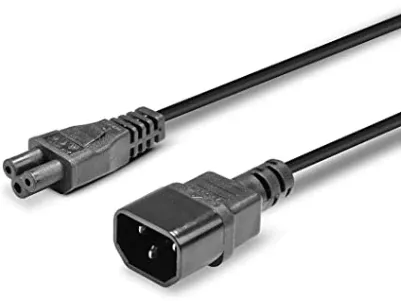
The final location is the main "network cabinet" where the internet comes into the house:
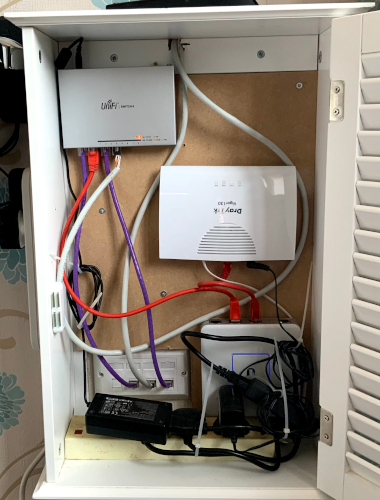
At the time, I was using a DrayTek Vigor 130 modem which has a more basic transformer plug. So rather than trying to find an IEC-compatible alternative, I opted for the CyberPower BricLCD 1kVA as this provides 6 UK outlet sockets (only 3 of which run through the UPS). Therefore I can just plug the critical devices straight into the 3 UPS-backed sockets.
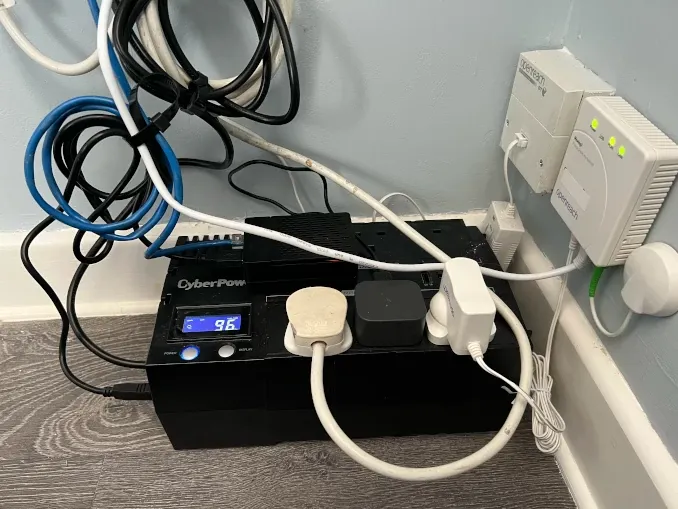
Was it worth it?
Having a UPS-backed home network has been really useful, especially when we need to turn off the power to allow for home improvements or to add new home automation tech, such as changing a light switch to use a Shelly or installing a video doorbell.
I was pleased with the Riello iDialog from day one, partly because I have integrated it with Network UPS Tools and Home Assistant – just like I did with my Eaton UPS. In the case of the Eaton, I used my microserver to run Network UPS Tools. For the CyperPower and Riello UPSs, they also power a Raspberry Pi each that runs a Network UPS Tools client that interfaces with the UPS over USB.
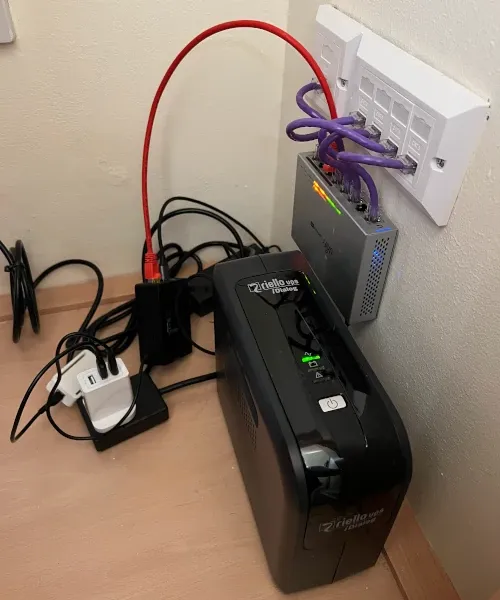
The CyberPower BricLCD 1kVA (BR1000ELCD), on the other hand, doesn't have quite as good integration with Network UPS Tools. It's not a dealbreaker, as its a perfectly good UPS; however, if I'd done more research before purchasing, I would have realised that the Network UPS Tools hardware compatibility list is colour coded based on the level of support:

By comparison, the Riello uses a "vendor provided protocol", whereas the CyperPower device is "based on publicly available protocol".
The data quality of the CyperPower also leaves a little to be desired. As you can see here, whilst the device is on mains, up until ~10:03, it reports a runtime of two hours. As soon as power is cut, the battery runtime drops to an hour and a half with some stepped fluctuation in the values provided thereafter.
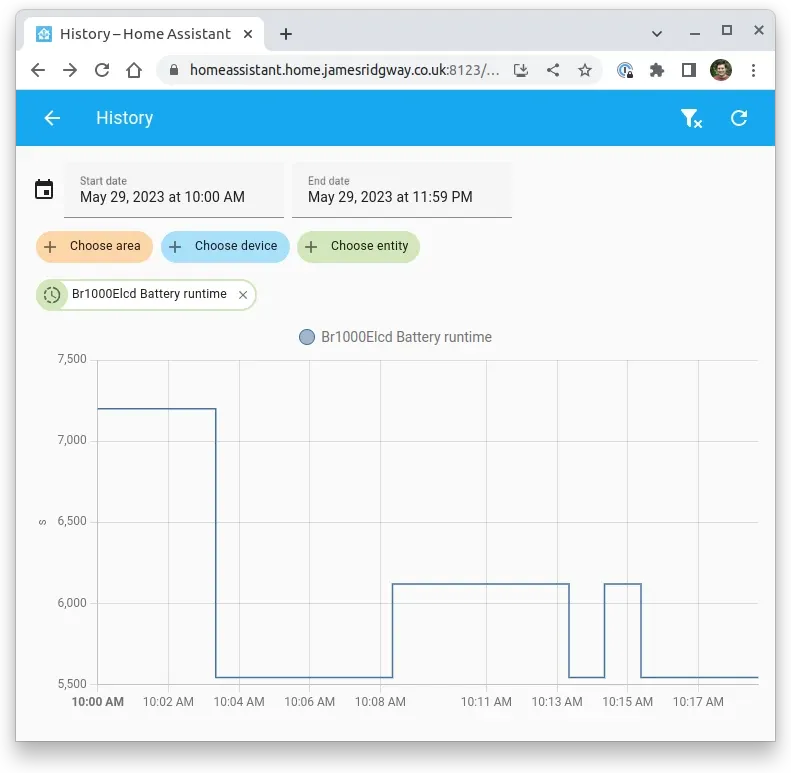
Having a UPS-backed home network is a luxury of sorts and certainly isn't necessary, but I have found it to be a useful addition to my home network setup!


